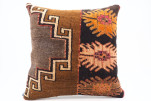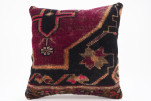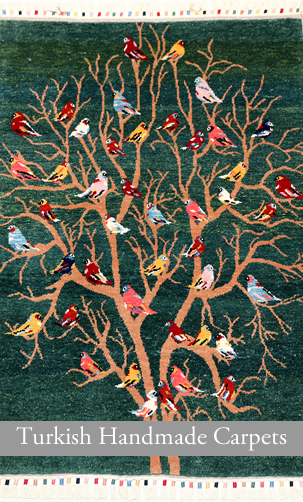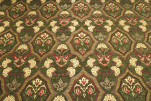About Dyeing
As you can see, many colors are used to dye kilims and carpets. All kilims were dyed with vegetable or stone dyestuffs in old time, while most of kilim makers use chemical dyestuffs now. Recently vegetable dyestuffs are also used again. In some areas, the whole town is working together to restore vegetable dyestuffs with traditional style. We can accurately define what kinds of dyestuffs are used in kilims if its artisans or studios are obvious. Due to the developing technology of chemical dyestuffs, however, almost kilims cannot be detected whether it is dyed with natural dyestuffs or not even by people engaging in kilim. In fact, we have sometimes obtained kilims that its dyestuffs are uncertain.
To inform definite information to customers, and to study more about kilims by ourselves, we authenticate all our Berfin Kilims’ items with well-experienced experts. They are professionals of old and ancient kilims and carpets. They estimate each kilim one by one and judge its producing dates and dyes. So, we introduce authenticated items to you.
We don’t mean that chemical dyestuffs are wrong or bad. Although dyestuffs are different, we can enjoy kilim in both stuffs. It is one of attractions of kilim with chemical dyestuffs that it can be purchased at a low, reasonable price.
In the present, vegetable dyeing spends long time, hard labor, and high cost. In the future, however, kilims dyed with vegetable gain unique texture and colors in long years. That is the reason we mainly introduce kilims dyed with vegetable dyestuffs. Although some old kilim dyed with vegetable in traditional method may loose its luster at the process of washing, there are recent ones that you can wash safely by yourself. Such products are introduced in Berfin Kilim.com. The combination of dyestuffs and colors is the best attraction of kilim.
Materials of Natural Dyestuffs
Red: roots of madders, skins of insects, indigofera.
Blue: indigo
Yellow: saffron, onions, leafs of grapes, pomegranates, rhamnaceae
Green: turmeric
Brown: barks, walnuts, nuts
Symbol of Colors
White: grief
Red: burning passion, bright and strong life, creativity, success and happiness
Yellow: Sun, wealth, prosperity
Brown: Prolificity, fertileness
Orange: Orange was once regarded as a color of hatred. In the East, orange means faith and piety.
Direction: maintenance of your kilim and carpet
With appropriate maintenance, you can use kilims and carpets for many decades. You don’t need to be so nervous using kilims basically. There are a few cases (color fading and cloth shrinking), so please be a little careful to avoid such cases.
Although we described it in exaggerated way first, everyday maintenance of kilim is very easy. You can clean your kilim with a vacuum cleaner. Patting it occasionally outside is also fine to brush the dust off. When you want to dry your kilim, keep it in the shade. Don’t leave it in the sun for many hours. Concerning cleaning of kilim, we recommend dry cleaning to all customers. If you wash kilim yourself, rub it with a wet-cloth or a wet-tissue paper at first and make sure of its colorfastness. Use a wool detergent or a shampoo on a plain surface. After spin-drying, smooth out a crumpled piece of kilim, and dry it on a place surface in the shade. If your kilim fades, take it to s laundry and tell its fading for a cleaner. Stains with foods and beverage need treatments quickly.
Effective Solutions for Stains
Alcohol drinks: Pat with a towel wetted with lukewarm water and alcohol.
Dirt: Dry completely, and use a vacuum cleaner.
Chocolate: Pat with a sponge wetted with ammonia.
Candy and other sweets: Wipe softly with a towel wetted with lukewarm
Ink: Pat with a sponge wetted with water, soap, alcohol.
Fruits: Wet a sponge with vinegar, lemon juice, or ammonia, and pat.
Egg: Don’t use hot water. Dilute ammonia with water, and drop it on the stain. Then pat with a towel or a sponge wetted with water and alcohol.
Blood: Don’t use hot water. Pat with a sponge wetted with salt water. If it isn’t effective, pat with a sponge wetted with white wine. When the stain already get dry, give a brush and pat with a sponge wetted with weak ammonia water.
Urine: Dry the stain with a towel and wipe off with a towel or a sponge wetted with white wine and vinegar. If it isn’t effective, pat with a towel or a sponge wetted with alcohol and ammonia.
Safekeeping and Insect Repellent
When you put your kilim away in a container or a box, an insect repellent is necessary. You should fold your kilim and keep in a container with an insect repellent. Carpet should be rolled up and covered, then keep with an insect repellent. Don’t stand the rolled-up carpet vertically. A Carpet should be put on a plain surface.


















